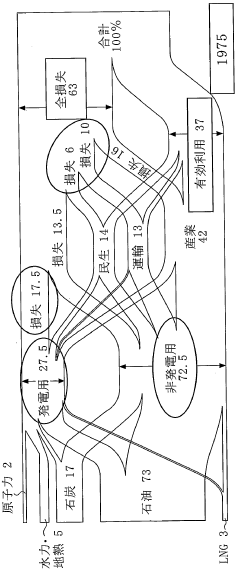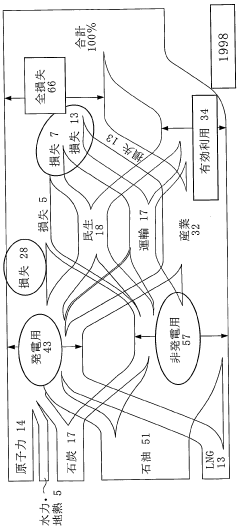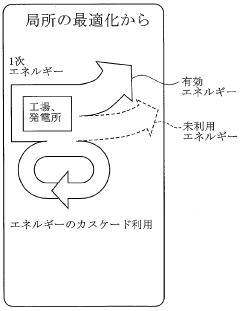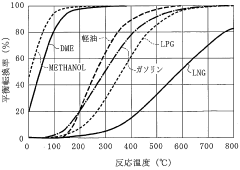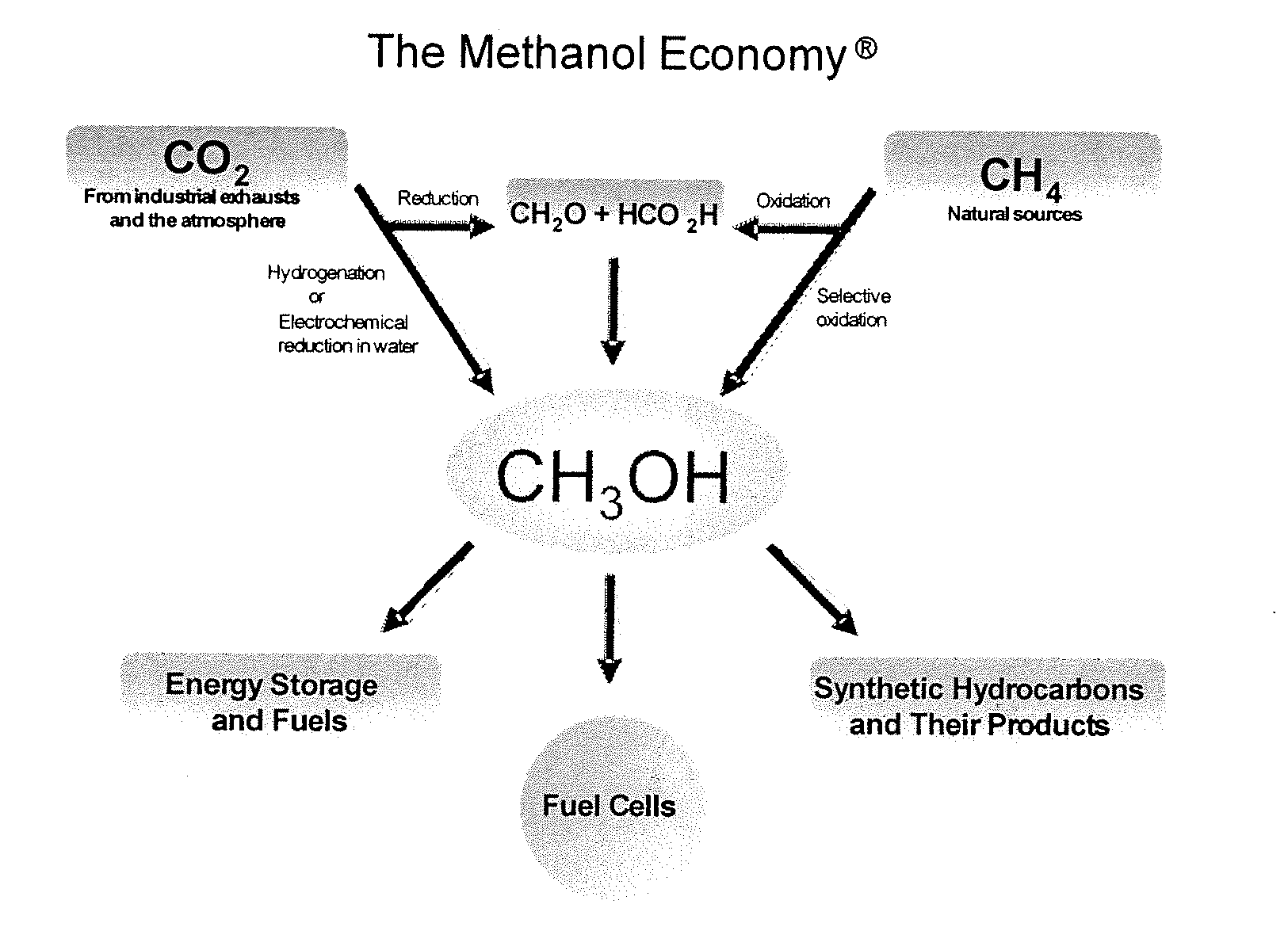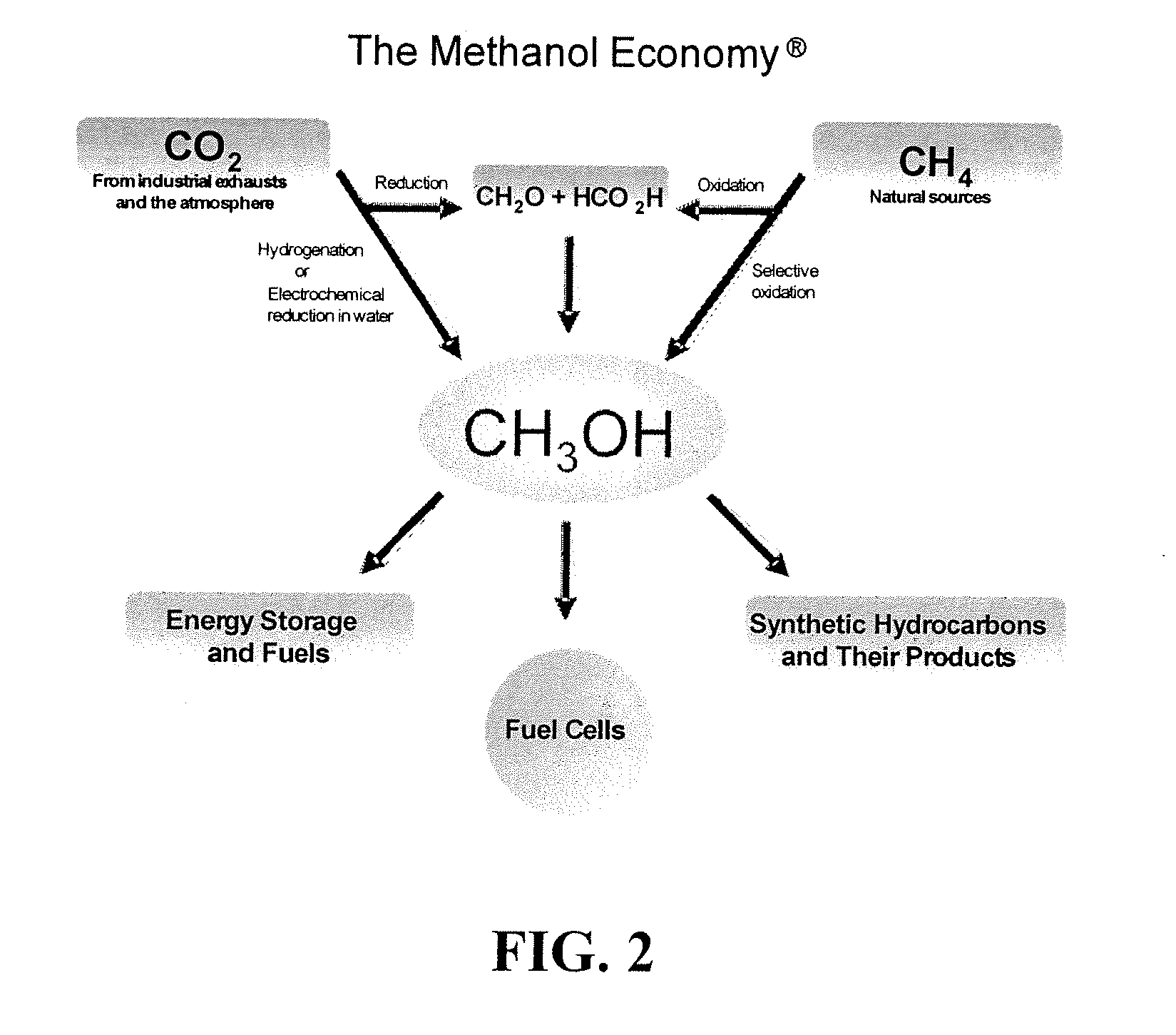Dimethyl Ether: Gateway to Achieving Smart Energy Goals
JUL 1, 20259 MIN READ
Generate Your Research Report Instantly with AI Agent
Patsnap Eureka helps you evaluate technical feasibility & market potential.
DME Technology Background and Objectives
Dimethyl ether (DME) has emerged as a promising alternative fuel and chemical feedstock, garnering significant attention in the pursuit of smart energy goals. The technology surrounding DME has evolved rapidly over the past few decades, driven by the global need for cleaner and more sustainable energy sources. Initially developed as a propellant and refrigerant, DME's potential as a fuel and chemical intermediate has expanded its applications across various industries.
The historical development of DME technology can be traced back to the 1960s when it was first produced on a commercial scale. However, it wasn't until the 1990s that serious research into DME as an alternative fuel began, primarily led by countries like Japan, China, and Sweden. This shift in focus was largely motivated by the growing concerns over environmental pollution and the need to reduce dependence on conventional fossil fuels.
As research progressed, the versatility of DME became increasingly apparent. Its clean-burning properties, ease of liquefaction, and compatibility with existing infrastructure made it an attractive option for replacing or supplementing traditional fuels. The technology for DME production has also advanced significantly, with various pathways being explored, including synthesis from natural gas, coal, and biomass.
The primary objectives of current DME technology research are multifaceted. One key goal is to optimize production processes to improve efficiency and reduce costs, making DME more competitive with conventional fuels. This includes developing more effective catalysts and refining synthesis techniques. Another crucial objective is to expand the applications of DME, particularly in the transportation sector, where it shows promise as a diesel substitute and in fuel cells.
Environmental considerations play a central role in shaping DME technology objectives. Researchers aim to enhance the sustainability of DME production, focusing on carbon-neutral or carbon-negative pathways, particularly through the use of renewable feedstocks and carbon capture technologies. Additionally, there is a strong emphasis on improving DME's performance characteristics to meet stringent emission standards and energy efficiency requirements.
The integration of DME into existing energy systems is another key objective. This involves developing and adapting infrastructure, engines, and appliances to effectively utilize DME. Researchers are working on creating seamless transitions between DME and conventional fuels, ensuring compatibility with current technologies while paving the way for future innovations.
As the world moves towards smarter and more sustainable energy solutions, DME technology is positioned to play a significant role. The ongoing research aims not only to address current energy challenges but also to anticipate future needs, aligning with broader smart energy goals such as grid flexibility, energy storage, and the integration of renewable sources. The evolution of DME technology exemplifies the dynamic nature of energy research, constantly adapting to meet the changing demands of a world in transition towards cleaner, more efficient energy systems.
The historical development of DME technology can be traced back to the 1960s when it was first produced on a commercial scale. However, it wasn't until the 1990s that serious research into DME as an alternative fuel began, primarily led by countries like Japan, China, and Sweden. This shift in focus was largely motivated by the growing concerns over environmental pollution and the need to reduce dependence on conventional fossil fuels.
As research progressed, the versatility of DME became increasingly apparent. Its clean-burning properties, ease of liquefaction, and compatibility with existing infrastructure made it an attractive option for replacing or supplementing traditional fuels. The technology for DME production has also advanced significantly, with various pathways being explored, including synthesis from natural gas, coal, and biomass.
The primary objectives of current DME technology research are multifaceted. One key goal is to optimize production processes to improve efficiency and reduce costs, making DME more competitive with conventional fuels. This includes developing more effective catalysts and refining synthesis techniques. Another crucial objective is to expand the applications of DME, particularly in the transportation sector, where it shows promise as a diesel substitute and in fuel cells.
Environmental considerations play a central role in shaping DME technology objectives. Researchers aim to enhance the sustainability of DME production, focusing on carbon-neutral or carbon-negative pathways, particularly through the use of renewable feedstocks and carbon capture technologies. Additionally, there is a strong emphasis on improving DME's performance characteristics to meet stringent emission standards and energy efficiency requirements.
The integration of DME into existing energy systems is another key objective. This involves developing and adapting infrastructure, engines, and appliances to effectively utilize DME. Researchers are working on creating seamless transitions between DME and conventional fuels, ensuring compatibility with current technologies while paving the way for future innovations.
As the world moves towards smarter and more sustainable energy solutions, DME technology is positioned to play a significant role. The ongoing research aims not only to address current energy challenges but also to anticipate future needs, aligning with broader smart energy goals such as grid flexibility, energy storage, and the integration of renewable sources. The evolution of DME technology exemplifies the dynamic nature of energy research, constantly adapting to meet the changing demands of a world in transition towards cleaner, more efficient energy systems.
Market Demand Analysis for DME
The global market for dimethyl ether (DME) is experiencing significant growth driven by the increasing demand for clean and sustainable energy solutions. As countries worldwide strive to achieve their smart energy goals and reduce carbon emissions, DME has emerged as a promising alternative fuel with diverse applications across various sectors.
In the transportation sector, DME is gaining traction as a potential replacement for diesel fuel in heavy-duty vehicles and marine engines. Its high cetane number and clean-burning properties make it an attractive option for reducing particulate matter and NOx emissions. The market for DME in this sector is expected to expand as governments implement stricter emission regulations and fleet operators seek cost-effective, environmentally friendly fuel alternatives.
The industrial sector presents another substantial market opportunity for DME. As a propellant and aerosol propellant, DME is increasingly being used in personal care products, paints, and coatings due to its low toxicity and environmental friendliness. Additionally, DME's potential as a chemical feedstock for producing olefins and other valuable chemicals is driving demand in the petrochemical industry.
In the residential and commercial sectors, DME is finding applications as a clean-burning cooking and heating fuel, particularly in regions with limited access to natural gas infrastructure. This market segment is expected to grow significantly in developing countries, where there is a pressing need for affordable and clean energy alternatives to traditional biomass fuels.
The power generation sector is also showing interest in DME as a potential fuel for gas turbines and combined cycle power plants. Its ability to be produced from renewable sources, such as biomass and waste, aligns with the growing focus on decarbonizing electricity production.
Geographically, the Asia-Pacific region is expected to dominate the DME market, with China leading in production and consumption. Europe and North America are also witnessing increased adoption of DME, driven by supportive government policies and growing environmental concerns.
Despite the positive market outlook, challenges such as high production costs and limited infrastructure for DME distribution and storage need to be addressed to fully realize its market potential. Ongoing research and development efforts are focused on improving production efficiency and reducing costs to enhance DME's competitiveness against conventional fuels.
As the world transitions towards a more sustainable energy future, the market demand for DME is projected to continue its upward trajectory. The versatility of DME as a fuel and chemical feedstock, coupled with its environmental benefits, positions it as a key player in achieving smart energy goals across multiple sectors and regions.
In the transportation sector, DME is gaining traction as a potential replacement for diesel fuel in heavy-duty vehicles and marine engines. Its high cetane number and clean-burning properties make it an attractive option for reducing particulate matter and NOx emissions. The market for DME in this sector is expected to expand as governments implement stricter emission regulations and fleet operators seek cost-effective, environmentally friendly fuel alternatives.
The industrial sector presents another substantial market opportunity for DME. As a propellant and aerosol propellant, DME is increasingly being used in personal care products, paints, and coatings due to its low toxicity and environmental friendliness. Additionally, DME's potential as a chemical feedstock for producing olefins and other valuable chemicals is driving demand in the petrochemical industry.
In the residential and commercial sectors, DME is finding applications as a clean-burning cooking and heating fuel, particularly in regions with limited access to natural gas infrastructure. This market segment is expected to grow significantly in developing countries, where there is a pressing need for affordable and clean energy alternatives to traditional biomass fuels.
The power generation sector is also showing interest in DME as a potential fuel for gas turbines and combined cycle power plants. Its ability to be produced from renewable sources, such as biomass and waste, aligns with the growing focus on decarbonizing electricity production.
Geographically, the Asia-Pacific region is expected to dominate the DME market, with China leading in production and consumption. Europe and North America are also witnessing increased adoption of DME, driven by supportive government policies and growing environmental concerns.
Despite the positive market outlook, challenges such as high production costs and limited infrastructure for DME distribution and storage need to be addressed to fully realize its market potential. Ongoing research and development efforts are focused on improving production efficiency and reducing costs to enhance DME's competitiveness against conventional fuels.
As the world transitions towards a more sustainable energy future, the market demand for DME is projected to continue its upward trajectory. The versatility of DME as a fuel and chemical feedstock, coupled with its environmental benefits, positions it as a key player in achieving smart energy goals across multiple sectors and regions.
Current State and Challenges of DME Technology
Dimethyl ether (DME) technology has made significant strides in recent years, positioning itself as a promising alternative fuel and chemical feedstock. The current state of DME technology is characterized by a growing interest in its production and application across various sectors, particularly in the energy and transportation industries.
DME production has seen notable advancements, with several commercial-scale plants operating globally. The primary production method involves the dehydration of methanol, which can be derived from various feedstocks such as natural gas, coal, or biomass. This flexibility in feedstock options enhances DME's potential as a versatile energy carrier.
In the transportation sector, DME has gained traction as a clean-burning diesel substitute. Several automotive manufacturers have conducted successful trials of DME-powered vehicles, demonstrating its compatibility with existing diesel engine technology with minor modifications. The low particulate emissions and reduced NOx output of DME make it an attractive option for meeting stringent environmental regulations.
Despite these advancements, DME technology faces several challenges that hinder its widespread adoption. One of the primary obstacles is the lack of established infrastructure for DME distribution and storage. Unlike conventional fuels, DME requires specialized handling and storage facilities, which necessitates significant investment in infrastructure development.
Another challenge lies in the economics of DME production. While the technology for DME synthesis is well-established, the cost-competitiveness of DME compared to conventional fuels remains a concern. Fluctuations in feedstock prices, particularly natural gas, can significantly impact the economic viability of DME production.
Technical challenges also persist in optimizing DME production processes. Improving catalyst efficiency, enhancing process integration, and developing more cost-effective purification methods are areas that require further research and development. Additionally, the scalability of DME production to meet potential large-scale demand poses logistical and technical hurdles.
In the context of achieving smart energy goals, DME technology faces the challenge of integrating with renewable energy sources. While DME can be produced from renewable feedstocks, such as biomass or captured CO2, the processes for doing so at scale are still in the early stages of development. Bridging this gap is crucial for positioning DME as a sustainable energy solution.
Regulatory frameworks and policy support also present challenges for DME technology. The lack of standardized regulations for DME as a fuel or chemical feedstock in many regions creates uncertainty for potential investors and users. Developing comprehensive policies that address safety standards, quality specifications, and incentives for DME adoption is essential for fostering market growth.
DME production has seen notable advancements, with several commercial-scale plants operating globally. The primary production method involves the dehydration of methanol, which can be derived from various feedstocks such as natural gas, coal, or biomass. This flexibility in feedstock options enhances DME's potential as a versatile energy carrier.
In the transportation sector, DME has gained traction as a clean-burning diesel substitute. Several automotive manufacturers have conducted successful trials of DME-powered vehicles, demonstrating its compatibility with existing diesel engine technology with minor modifications. The low particulate emissions and reduced NOx output of DME make it an attractive option for meeting stringent environmental regulations.
Despite these advancements, DME technology faces several challenges that hinder its widespread adoption. One of the primary obstacles is the lack of established infrastructure for DME distribution and storage. Unlike conventional fuels, DME requires specialized handling and storage facilities, which necessitates significant investment in infrastructure development.
Another challenge lies in the economics of DME production. While the technology for DME synthesis is well-established, the cost-competitiveness of DME compared to conventional fuels remains a concern. Fluctuations in feedstock prices, particularly natural gas, can significantly impact the economic viability of DME production.
Technical challenges also persist in optimizing DME production processes. Improving catalyst efficiency, enhancing process integration, and developing more cost-effective purification methods are areas that require further research and development. Additionally, the scalability of DME production to meet potential large-scale demand poses logistical and technical hurdles.
In the context of achieving smart energy goals, DME technology faces the challenge of integrating with renewable energy sources. While DME can be produced from renewable feedstocks, such as biomass or captured CO2, the processes for doing so at scale are still in the early stages of development. Bridging this gap is crucial for positioning DME as a sustainable energy solution.
Regulatory frameworks and policy support also present challenges for DME technology. The lack of standardized regulations for DME as a fuel or chemical feedstock in many regions creates uncertainty for potential investors and users. Developing comprehensive policies that address safety standards, quality specifications, and incentives for DME adoption is essential for fostering market growth.
Current DME Production Methods
01 Production of dimethyl ether
Various methods for producing dimethyl ether are described, including catalytic dehydration of methanol, direct synthesis from syngas, and conversion of other hydrocarbons. These processes often involve specific catalysts and reaction conditions to optimize yield and selectivity.- Production of dimethyl ether: Various methods for producing dimethyl ether are described, including catalytic dehydration of methanol, direct synthesis from syngas, and conversion of other hydrocarbons. These processes often involve specific catalysts and reaction conditions to optimize yield and selectivity.
- Catalysts for dimethyl ether synthesis: Different types of catalysts are used in the production of dimethyl ether, including zeolites, metal oxides, and composite catalysts. The choice and preparation of catalysts significantly influence the efficiency and selectivity of the dimethyl ether synthesis process.
- Applications of dimethyl ether: Dimethyl ether has various applications, including use as a fuel additive, aerosol propellant, and refrigerant. It is also being explored as an alternative clean fuel for diesel engines and power generation due to its favorable combustion properties.
- Purification and separation of dimethyl ether: Techniques for purifying and separating dimethyl ether from reaction mixtures or other compounds are crucial in its production process. These may include distillation, adsorption, and membrane separation methods to achieve high-purity dimethyl ether.
- Environmental and safety considerations: Research on the environmental impact and safety aspects of dimethyl ether production and use is ongoing. This includes studies on emissions reduction, storage safety, and handling procedures to ensure the sustainable and safe utilization of dimethyl ether in various applications.
02 Catalysts for dimethyl ether synthesis
Different types of catalysts are used in the production of dimethyl ether, including zeolites, metal oxides, and composite catalysts. The choice and preparation of catalysts significantly influence the efficiency and selectivity of the dimethyl ether synthesis process.Expand Specific Solutions03 Applications of dimethyl ether
Dimethyl ether has various applications, including use as a fuel additive, aerosol propellant, and refrigerant. It is also being explored as an alternative clean fuel for diesel engines and power generation due to its low emissions and high cetane number.Expand Specific Solutions04 Purification and separation of dimethyl ether
Methods for purifying and separating dimethyl ether from reaction mixtures or other compounds are described. These processes often involve distillation, adsorption, or membrane separation techniques to obtain high-purity dimethyl ether for various applications.Expand Specific Solutions05 Environmental and safety considerations
Research on the environmental impact and safety aspects of dimethyl ether production and use is ongoing. This includes studies on emissions reduction, handling procedures, and storage requirements to ensure safe and sustainable utilization of dimethyl ether in various applications.Expand Specific Solutions
Key Players in DME Industry
The research on Dimethyl Ether (DME) as a gateway to achieving smart energy goals is in a nascent stage, with growing market potential due to increasing focus on clean energy alternatives. The global DME market is expected to expand significantly in the coming years, driven by its applications in various sectors. Technologically, the field is evolving rapidly, with major players like China Petroleum & Chemical Corp., SK Energy, and BASF leading research efforts. Academic institutions such as the University of Southern California and the Chinese Academy of Science Guangzhou Energy Research Institute are contributing to advancements in DME technology. The involvement of diverse stakeholders, including petrochemical companies, research institutes, and universities, indicates a collaborative approach towards developing DME as a viable smart energy solution.
China Petroleum & Chemical Corp.
Technical Solution: China Petroleum & Chemical Corp. (Sinopec) has developed a comprehensive approach to dimethyl ether (DME) production and utilization. Their technology involves a two-step process: first, synthesizing methanol from syngas, then dehydrating methanol to produce DME. Sinopec has optimized catalyst formulations to improve conversion efficiency, achieving DME yields of up to 99% [1]. They have also implemented large-scale DME production facilities with capacities exceeding 1 million tons per year [2]. Sinopec's research extends to DME applications, including its use as a clean-burning fuel for power generation and transportation, with pilot projects demonstrating up to 30% reduction in particulate emissions compared to diesel [3].
Strengths: Vertically integrated production chain, large-scale manufacturing capabilities, and extensive R&D resources. Weaknesses: Dependence on fossil fuel feedstocks and potential competition from renewable energy sources.
BASF Corp.
Technical Solution: BASF Corp. has developed an innovative single-step process for DME production directly from syngas, bypassing the methanol intermediate stage. This technology, known as the BASF Direct DME (DDME) process, utilizes a bifunctional catalyst that combines methanol synthesis and dehydration functions. The process achieves conversion rates of up to 95% and selectivity towards DME of over 90% [4]. BASF has also focused on improving the sustainability of DME production by incorporating CO2 utilization, potentially reducing carbon footprint by up to 20% compared to conventional methods [5]. Additionally, BASF is exploring DME as a hydrogen carrier for fuel cell applications, with preliminary results showing energy densities comparable to compressed hydrogen at 700 bar [6].
Strengths: Advanced single-step production technology, focus on sustainability, and diverse application research. Weaknesses: Limited experience in large-scale DME production and distribution infrastructure.
Key DME Technology Innovations
Energy supply method and system
PatentWO2006004140A1
Innovation
- The introduction of Dimethyl Ether (DME) as a versatile energy circulation medium, which can be derived from biomass, waste, and petroleum residues, and used for power generation, transportation, and heating, allowing for efficient energy storage and distribution without relying on pipelines, and enabling the conversion of waste heat into usable energy.
Conversion of carbon dioxide to methanol and/or dimethyl ether using BI-reforming of methane or natural gas
PatentActiveUS20080319093A1
Innovation
- A bi-reforming process combining steam and dry reforming of methane to achieve a specific CO/H2 ratio, allowing for the efficient conversion of carbon dioxide and methane into methanol and dimethyl ether without producing CO2 or unwanted by-products, using a catalyst such as V2O5 and NiO on a silica carrier.
Environmental Impact of DME
Dimethyl ether (DME) has gained significant attention as a potential alternative fuel due to its promising environmental profile. When compared to conventional fossil fuels, DME demonstrates several advantages in terms of reduced emissions and overall environmental impact.
One of the key environmental benefits of DME is its lower carbon dioxide (CO2) emissions. When used as a fuel, DME produces approximately 10-15% less CO2 compared to diesel fuel. This reduction in greenhouse gas emissions aligns with global efforts to mitigate climate change and transition towards cleaner energy sources.
Furthermore, DME combustion results in negligible particulate matter (PM) emissions. This characteristic is particularly important for improving air quality in urban areas, where particulate pollution from diesel engines is a major concern. The reduction in PM emissions can lead to significant improvements in public health outcomes, particularly in densely populated regions.
DME also exhibits lower nitrogen oxide (NOx) emissions compared to conventional diesel fuel. NOx is a major contributor to smog formation and acid rain, and its reduction can have positive impacts on both human health and ecosystem integrity. The lower NOx emissions of DME make it an attractive option for meeting increasingly stringent emission standards in various sectors, including transportation and industrial applications.
In terms of its lifecycle environmental impact, DME shows promise as a renewable fuel when produced from biomass or waste materials. This production pathway can potentially result in a near-carbon-neutral fuel, further enhancing its environmental credentials. However, it is important to note that the overall environmental impact of DME depends heavily on its production method and feedstock source.
DME's non-toxic and biodegradable nature also contributes to its favorable environmental profile. In the event of spills or leaks, DME does not pose significant risks to soil or water ecosystems, unlike many conventional fossil fuels. This characteristic reduces the potential for long-term environmental damage associated with fuel transportation and storage.
Additionally, DME's compatibility with existing LPG infrastructure means that its adoption can be achieved with minimal changes to current distribution systems. This factor can lead to reduced environmental impacts associated with the development of new fuel distribution networks.
However, it is important to consider potential environmental trade-offs associated with large-scale DME production. For instance, if DME production relies heavily on natural gas as a feedstock, it may lead to increased methane emissions from gas extraction and processing. Therefore, a comprehensive life cycle assessment is crucial to fully understand and optimize the environmental impact of DME as an energy carrier.
One of the key environmental benefits of DME is its lower carbon dioxide (CO2) emissions. When used as a fuel, DME produces approximately 10-15% less CO2 compared to diesel fuel. This reduction in greenhouse gas emissions aligns with global efforts to mitigate climate change and transition towards cleaner energy sources.
Furthermore, DME combustion results in negligible particulate matter (PM) emissions. This characteristic is particularly important for improving air quality in urban areas, where particulate pollution from diesel engines is a major concern. The reduction in PM emissions can lead to significant improvements in public health outcomes, particularly in densely populated regions.
DME also exhibits lower nitrogen oxide (NOx) emissions compared to conventional diesel fuel. NOx is a major contributor to smog formation and acid rain, and its reduction can have positive impacts on both human health and ecosystem integrity. The lower NOx emissions of DME make it an attractive option for meeting increasingly stringent emission standards in various sectors, including transportation and industrial applications.
In terms of its lifecycle environmental impact, DME shows promise as a renewable fuel when produced from biomass or waste materials. This production pathway can potentially result in a near-carbon-neutral fuel, further enhancing its environmental credentials. However, it is important to note that the overall environmental impact of DME depends heavily on its production method and feedstock source.
DME's non-toxic and biodegradable nature also contributes to its favorable environmental profile. In the event of spills or leaks, DME does not pose significant risks to soil or water ecosystems, unlike many conventional fossil fuels. This characteristic reduces the potential for long-term environmental damage associated with fuel transportation and storage.
Additionally, DME's compatibility with existing LPG infrastructure means that its adoption can be achieved with minimal changes to current distribution systems. This factor can lead to reduced environmental impacts associated with the development of new fuel distribution networks.
However, it is important to consider potential environmental trade-offs associated with large-scale DME production. For instance, if DME production relies heavily on natural gas as a feedstock, it may lead to increased methane emissions from gas extraction and processing. Therefore, a comprehensive life cycle assessment is crucial to fully understand and optimize the environmental impact of DME as an energy carrier.
DME Policy and Regulations
The regulatory landscape for dimethyl ether (DME) as an alternative fuel is evolving rapidly across the globe. In the United States, the Environmental Protection Agency (EPA) has approved DME as a renewable fuel under the Renewable Fuel Standard program, recognizing its potential to reduce greenhouse gas emissions. This classification allows DME producers to generate Renewable Identification Numbers (RINs), providing economic incentives for its production and use.
The European Union has also taken steps to promote DME as part of its renewable energy strategy. The Renewable Energy Directive (RED II) includes DME as an eligible renewable fuel, setting targets for its use in the transportation sector. Several EU member states have implemented tax incentives and subsidies to encourage the adoption of DME as a cleaner alternative to conventional diesel fuel.
In Asia, countries like China and Japan have been at the forefront of DME policy development. China has included DME in its national energy strategy, with policies aimed at promoting its production from coal and biomass. The government has set ambitious targets for DME production and use, particularly in the transportation and industrial sectors. Japan has focused on DME as a potential solution for energy security and environmental concerns, implementing demonstration projects and research initiatives to accelerate its adoption.
Regulatory frameworks for DME safety and handling have been established in many countries. The International Organization for Standardization (ISO) has developed standards for DME fuel quality (ISO 16861:2015) and storage tanks (ISO 21563:2016), providing a foundation for consistent global regulations. These standards address issues such as fuel purity, storage requirements, and safety measures for DME handling.
Despite these advancements, challenges remain in harmonizing DME regulations across different regions. Variations in fuel quality standards, blending requirements, and safety regulations can create barriers to international trade and technology transfer. Efforts are underway to address these issues through international cooperation and standardization initiatives.
As the world moves towards more sustainable energy solutions, policymakers are increasingly recognizing the role of DME in achieving smart energy goals. Many countries are now developing comprehensive regulatory frameworks that address the entire DME value chain, from production to end-use applications. These policies often include provisions for research and development support, infrastructure development, and market incentives to accelerate DME adoption.
The European Union has also taken steps to promote DME as part of its renewable energy strategy. The Renewable Energy Directive (RED II) includes DME as an eligible renewable fuel, setting targets for its use in the transportation sector. Several EU member states have implemented tax incentives and subsidies to encourage the adoption of DME as a cleaner alternative to conventional diesel fuel.
In Asia, countries like China and Japan have been at the forefront of DME policy development. China has included DME in its national energy strategy, with policies aimed at promoting its production from coal and biomass. The government has set ambitious targets for DME production and use, particularly in the transportation and industrial sectors. Japan has focused on DME as a potential solution for energy security and environmental concerns, implementing demonstration projects and research initiatives to accelerate its adoption.
Regulatory frameworks for DME safety and handling have been established in many countries. The International Organization for Standardization (ISO) has developed standards for DME fuel quality (ISO 16861:2015) and storage tanks (ISO 21563:2016), providing a foundation for consistent global regulations. These standards address issues such as fuel purity, storage requirements, and safety measures for DME handling.
Despite these advancements, challenges remain in harmonizing DME regulations across different regions. Variations in fuel quality standards, blending requirements, and safety regulations can create barriers to international trade and technology transfer. Efforts are underway to address these issues through international cooperation and standardization initiatives.
As the world moves towards more sustainable energy solutions, policymakers are increasingly recognizing the role of DME in achieving smart energy goals. Many countries are now developing comprehensive regulatory frameworks that address the entire DME value chain, from production to end-use applications. These policies often include provisions for research and development support, infrastructure development, and market incentives to accelerate DME adoption.
Unlock deeper insights with Patsnap Eureka Quick Research — get a full tech report to explore trends and direct your research. Try now!
Generate Your Research Report Instantly with AI Agent
Supercharge your innovation with Patsnap Eureka AI Agent Platform!
